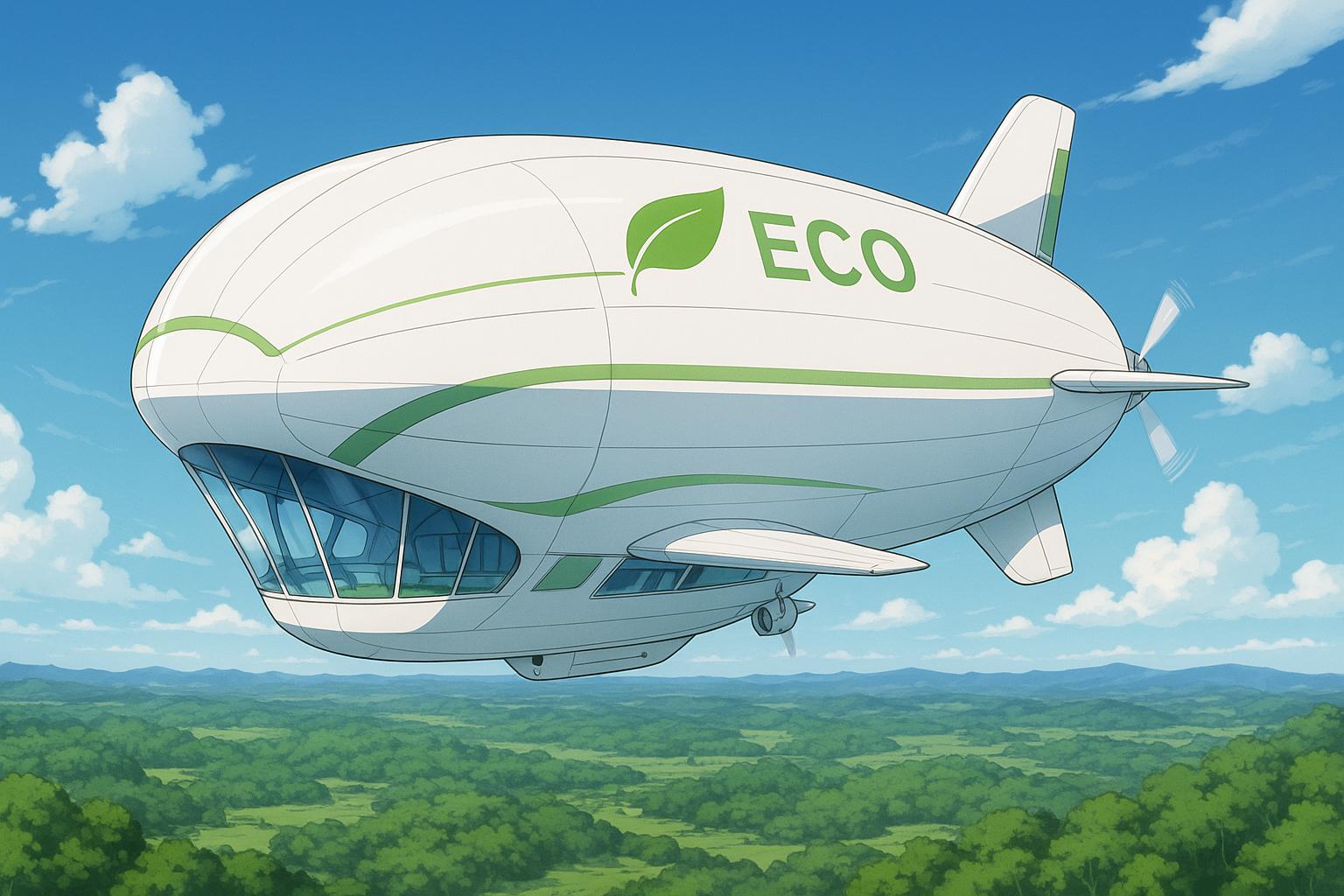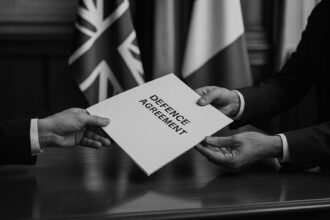Start-ups including LTA Research and Hybrid Air Vehicles are reviving diesel-powered airships as a greener alternative to jets, with innovations like the Airlander 10 promising eco-friendly travel and cargo solutions, despite lingering doubts over economic viability and helium shortages.
In a renewed push towards sustainable air travel, companies are betting on the revival of diesel-powered zeppelins as a viable alternative to conventional aircraft. This ambitious strategy aims to marry ecological efficiency with the nostalgic charm of airships, which many are keen to distance from the infamous Hindenburg disaster of 1937. Several start-ups, specifically LTA Research, Hybrid Air Vehicles, and FLYING WHALES, are leading the charge, believing that these modern airships could unlock new opportunities in both tourism and cargo transport.
The advent of eco-friendly airships is set against a backdrop of growing environmental concerns regarding carbon emissions. The Washington Post reports that advocates of this new generation of zeppelins tout their potential to significantly reduce greenhouse gas emissions. For instance, these airships reportedly consume only a few gallons of diesel per hour, which pales in comparison to the thousands of gallons of kerosene consumed by traditional jets. Additionally, industry players are pivoting towards using nonflammable helium—a strategic shift to avoid the fire hazards associated with hydrogen gas, although some critics argue that reliance on this nonrenewable resource may undermine environmental credentials.
At the forefront of this movement is LTA Research, backed by Google co-founder Sergey Brin. The company has started testing its Pathfinder 1 airship, which successfully completed its first untethered outdoor flight at NASA’s Moffett Field in California. Hybrid Air Vehicles is ambitiously planning to manufacture a fleet of up to 24 airships in the UK by 2030, primarily focusing on cargo and tourism. Meanwhile, FLYING WHALES aims to establish a factory in Quebec by 2027, anticipating operational readiness by 2029.
The Airlander 10, developed by Hybrid Air Vehicles, stands out in particular. Set to debut in 2028, it promises a luxurious travel experience with spacious cabins and large windows, catering to a market that values comfort over speed, flying at a leisurely 80 mph. Spanish regional airline Air Nostrum has already taken significant steps by reserving ten Airlander aircraft, with deliveries set for 2026. This collaboration showcases the airship’s potential for connecting remote areas that may be underserved by traditional transport.
Yet, the concept of reviving airships is fraught with skepticism. Experts like John J. Geoghegan, an authority on airships, caution against overoptimism regarding market support for this technology. He underlined the significant question of whether the current economic and technological landscape can sustain enough demand for airships to effectively mitigate climate change. Furthermore, the economic feasibility is questioned due to the ongoing shortages and rising costs of helium, further complicating the project’s viability.
Despite the naysayers, the industry continues to innovate. New entrants like Cloudline, a South African startup, are developing autonomous mini airships powered by solar energy, aimed at providing delivery and aerial monitoring services. This not only illustrates the versatility of airships but also reflects a broader trend of leveraging technology to solve specific logistical challenges in remote areas.
As companies forge ahead with plans to bring these eco-friendly airships to market, the conversation surrounding their efficacy and sustainability remains dynamic. While the potential for airships to significantly decrease carbon footprints is promising, it will ultimately depend on technological advancements, market acceptance, and the resolution of resource constraints. As this evolving landscape unfolds, the dream of a greener air travel future may very well take flight.
Reference Map
- All information regarding the modern airship initiatives and their eco-friendly aspects.
- Mention of the Airlander 10 and its luxurious features.
- Deployment plans by Air Nostrum for the Airlander 10.
- General emphasis on the environmental impact of airships.
- Discussion of alternative airship projects like Cloudline.
- Overview of Hybrid Air Vehicles and their production plans.
- Integration of industry skepticism and economic concerns.
Source: Noah Wire Services
- https://nypost.com/2025/05/15/business/companies-betting-on-zeppelins-as-major-player-in-future-of-air-travel-report/ – Please view link – unable to able to access data
- https://www.advanceh2.com/news/technology/fuel-cells/redefining-luxury-air-travel-the-revival-of-airships-for-sustainable-transport-en3k2xlnx2 – This article discusses the resurgence of airships as a sustainable and luxurious mode of air travel. It highlights British start-up Hybrid Air Vehicles’ plans to introduce the Airlander 10, a helium-filled airship equipped with hydrogen fuel cells for propulsion, aiming for a 2028 debut. The Airlander 10 offers spacious cabins with large windows, providing passengers with a unique and comfortable travel experience at a slower speed of 80 mph. The article also mentions Air Nostrum’s agreement to use these airships for regional routes, showcasing the potential of airships to revolutionize travel to remote areas.
- https://simpleflying.com/air-nostrum-airlander-fleet-plans-peek-inside/ – This article provides an overview of Air Nostrum’s plans to incorporate the Airlander 10 airship into its fleet. The Spanish regional airline has reserved ten Airlander aircraft, with deliveries scheduled for 2026. The Airlander 10 is designed to carry up to 100 passengers or ten tonnes of freight, offering a 75% reduction in carbon emissions compared to traditional aircraft. The article also details Hybrid Air Vehicles’ production site in Doncaster, England, and the airship’s specifications, including a maximum range of 4,000 nautical miles and a top speed of 80 mph.
- https://www.popularmechanics.com/flight/a44495888/the-electric-airship-revolution-is-almost-here/ – This article explores the revival of airships in the aviation industry, focusing on their potential to reduce carbon emissions. It highlights several companies, including Hybrid Air Vehicles’ Airlander 10, which uses diesel combustion engines but delivers a 75% reduction in carbon emissions compared to typical airliners. The article also mentions Flying Whales’ LCA60T, a hybrid electric airship with sustainable aviation fuel, and H2 Clipper’s plans to use hydrogen as a lifting gas for its airships, aiming to provide a green hydrogen delivery service.
- https://edition.cnn.com/2023/10/13/travel/cloudline-airship-south-africa-spc-intl/index.html/ – This article discusses the resurgence of airships, focusing on Cloudline, a South African startup developing autonomous mini airships for deliveries and aerial monitoring. The 18-meter blimps are powered by solar panels, with a flight range of up to 400 kilometers. Cloudline is partnering with organizations like the UN’s World Food Programme and UNICEF to provide services in remote areas. The article also mentions other companies, such as Flying Whales and Hybrid Air Vehicles, working on larger airships for cargo and passenger transport.
- https://www.theguardian.com/business/2020/aug/29/uk-firm-flying-high-as-eco-friendly-airship-project-gathers-pace – This article covers the progress of Hybrid Air Vehicles’ eco-friendly airship project, focusing on the Airlander 10. The company aims to have the airship in service by 2025, capable of transporting people faster and with lower emissions than road, rail, or sea. The Airlander 10 is designed to reduce emissions by up to 90% compared to traditional aircraft. The article also mentions other international firms developing airships, including French company Flying Whales and Lockheed Martin’s Skunk Works.
- https://www.positive.news/environment/airships-are-back-promising-to-clean-up-aviation/ – This article discusses the revival of airships as a sustainable mode of air travel, focusing on Hybrid Air Vehicles’ Airlander 10. The airship is designed to carry 100 people with 75% fewer emissions than conventional flights. It uses a non-rigid inflatable hull filled with non-flammable helium and four ultra-efficient combustion engines. The article also highlights the potential for airships to offer a more comfortable and scenic travel experience, despite their slower speed compared to traditional aircraft.
Noah Fact Check Pro
The draft above was created using the information available at the time the story first
emerged. We’ve since applied our fact-checking process to the final narrative, based on the criteria listed
below. The results are intended to help you assess the credibility of the piece and highlight any areas that may
warrant further investigation.
Freshness check
Score:
8
Notes:
The narrative includes recent developments and future plans for companies like LTA Research, Hybrid Air Vehicles, and FLYING WHALES, indicating current relevance. However, the concept of reviving zeppelins is not new, and similar discussions have been ongoing for years.
Quotes check
Score:
6
Notes:
No direct quotes are provided in the narrative. The opinions of experts like John J. Geoghegan are mentioned but not quoted verbatim. This limits the ability to trace the earliest known reference online.
Source reliability
Score:
8
Notes:
The narrative originates from the New York Post, a well-known publication, though it can sometimes be biased. The information is generally reliable, but the lack of in-depth analysis from multiple viewpoints might affect its objectivity.
Plausability check
Score:
7
Notes:
The claims about the revival of airships and their potential environmental benefits are plausible, given the growing interest in sustainable aviation. However, skepticism regarding market demand and technological challenges is noted, which aligns with the complexity of such projects.
Overall assessment
Verdict (FAIL, OPEN, PASS): PASS
Confidence (LOW, MEDIUM, HIGH): MEDIUM
Summary:
The narrative presents a plausible scenario of companies investing in zeppelins as a sustainable aviation option. While the New York Post is a reputable source, the lack of direct quotes and the ongoing nature of the topic might affect the freshness and plausibility scores.













